Green Tourism - The Key to Sustainable Development of Ha Long Bay
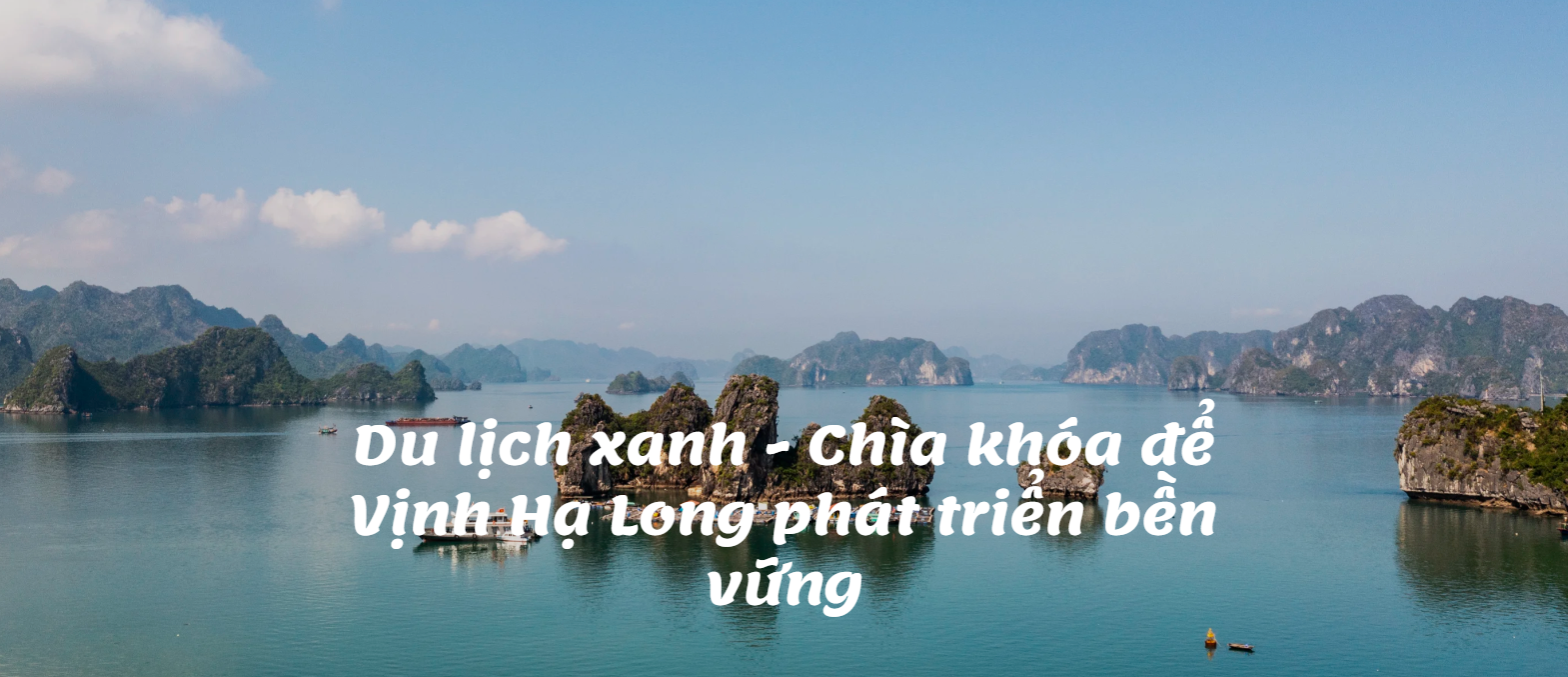
As a key economic sector of the region, Ha Long tourism is facing many challenges in cultural heritage preservation, heritage conservation, and environmental degradation. In light of this, the development of sustainable tourism with a focus on green growth is seen as a necessary direction to avoid "draining" the heritage, while also enhancing the region's competitiveness in the integration process.
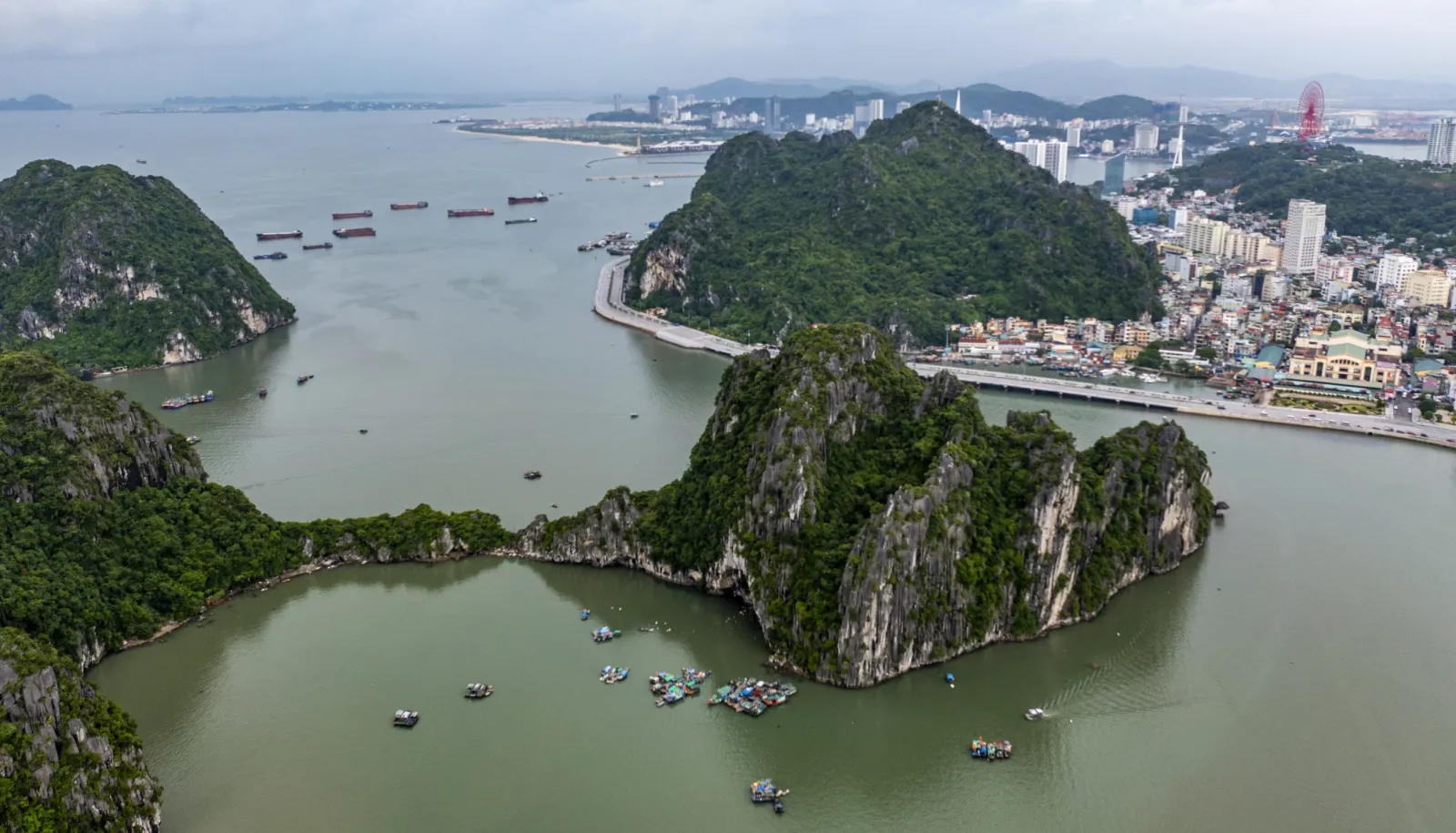
Tourism development linked to environmental protection
According to data from the Quang Ninh Department of Tourism, by October 2024, Quang Ninh welcomed over 16.7 million tourists, including more than 3 million international visitors, marking a 20% increase compared to the same period in 2023. Total tourism revenue reached over 40.1 trillion VND, an increase of 38% compared to last year.
For many Ha Long residents, tourism is often seen as the "golden egg-laying goose." The strong recovery of the tourism sector has significantly contributed to the overall development of Quang Ninh province since the pandemic, while also creating a source of investment for the preservation of Ha Long Bay.
Tourism is developing rapidly, with a surge in visitor numbers. At times, Ha Long has faced tourism overload, especially during holidays or peak seasons. If this situation is not well-managed, it could negatively impact the resources of the heritage site. The quality of services and visitor experiences may also be affected. In light of this, Ha Long needs to adopt a suitable strategy for developing sustainable tourism.
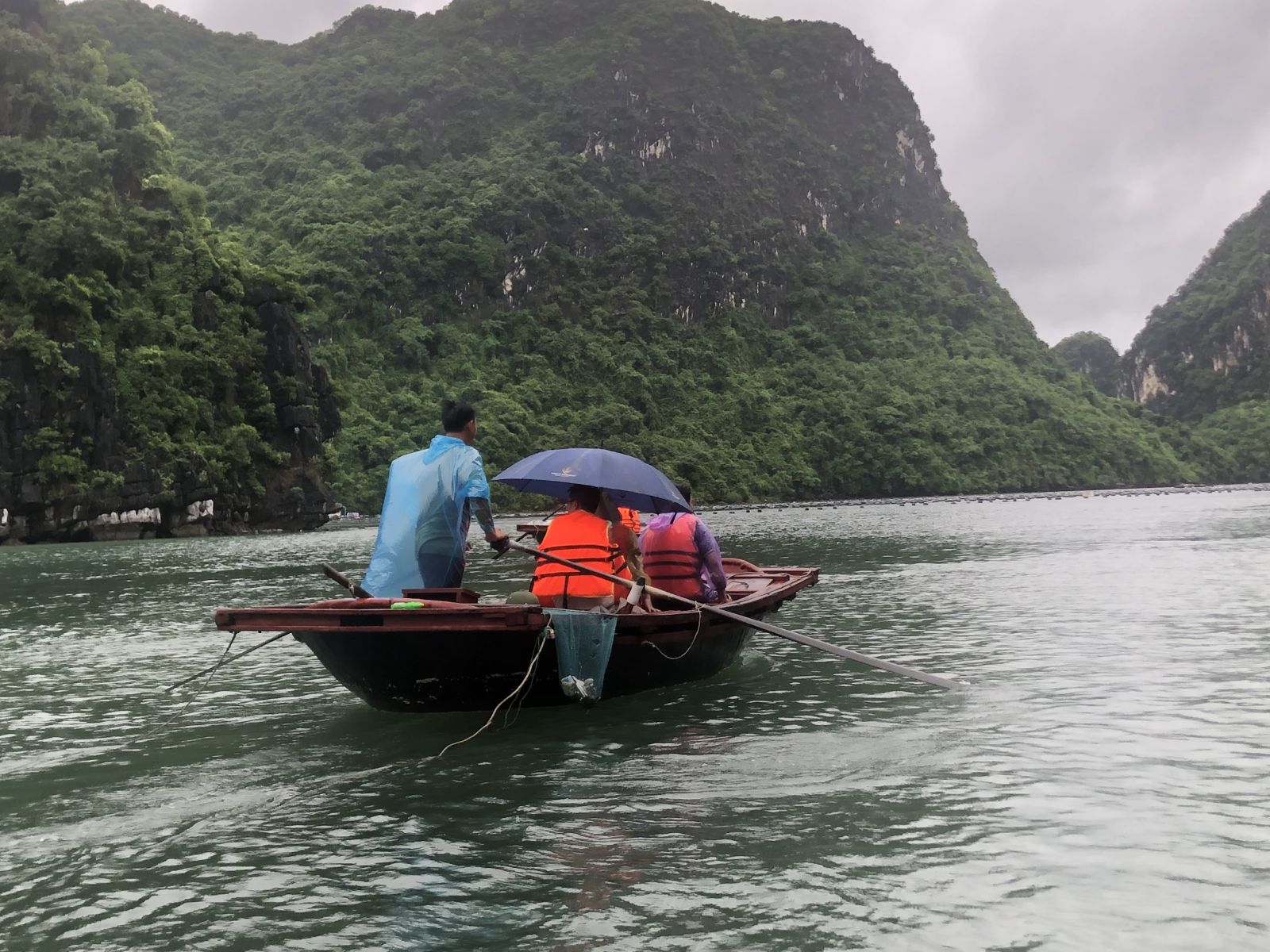
The boats bringing tourists to Vung Viêng fishing village always carry a trash net along with them.
Evaluating green tourism development as the right direction, Dr. Nguyễn Anh Tuấn, Director of the Institute for Tourism Development Research, analyzes: "Developing tourism with a focus on green growth should be based on respecting, preserving, and effectively promoting the value of resources. Therefore, localities need to implement activities that manage, operate, and consume green tourism; use less energy, and develop and utilize renewable energy sources. At the same time, to ensure sustainable tourism development, it is essential to create jobs and improve livelihoods for local people. This, in turn, contributes to building a green economy and achieving sustainable development goals."
According to a recent survey by TripAdvisor, a popular global travel website, 34% of tourists are willing to pay extra to stay at environmentally friendly hotels, and 50% are willing to spend more on companies that benefit local communities and engage in conservation efforts. This confirms that green tourism not only guarantees sustainable tourism development but also serves as a solution to attract high-spending, eco-conscious visitors who engage in responsible and civilized travel practices.
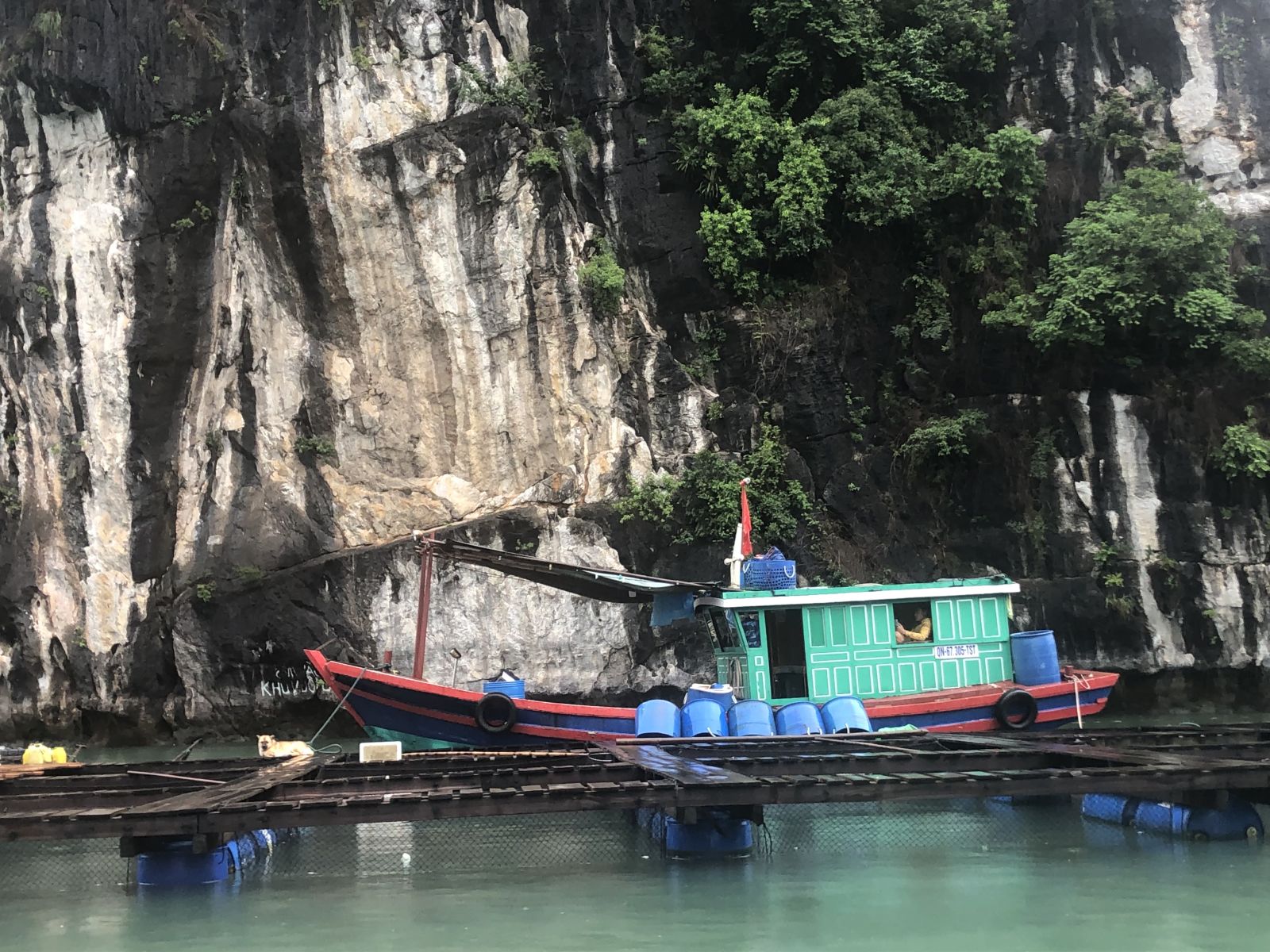
Oyster farming in Vung Viêng fishing village.
Recognizing that developing tourism with a focus on green growth is an inevitable path, Quang Ninh is one of the leading localities in promoting green tourism as a key economic sector.
First and foremost, with the goal of exploiting and effectively utilizing the value of Ha Long Bay, Quang Ninh province has determined that it must protect the natural environment of this natural heritage to the fullest through various measures. These include preventing sources of pollution from industrial development, daily life, service businesses, and commerce, as well as the most challenging task of changing the unsustainable consumption habits of locals, tourists, and service providers.
According to Ha Long Bay Management Department’s report, environmental protection, pollution prevention, and control within the heritage site are top priorities, with significant efforts being made to improve and ensure the environment of Ha Long Bay. This has led to breakthroughs in attracting numerous environmental protection projects for Ha Long Bay, such as the Green Growth Project and the Ha Long Bay Environmental Protection Project funded by JICA.
The rate of wastewater collection and treatment in urban areas along the Ha Long Bay coastline reaches 48%.
The percentage of tourist boats operating in the bay with oil-water separation equipment installed is 100%.
The rate of single-use plastic waste that must be collected at tourist sites on the bay has decreased by 90%.
The percentage of foam buoys on floating structures in the bay that have been replaced is 94%.
Pollution from sources, especially from coastal discharge, bordering areas, and activities such as coal extraction and transportation, is closely monitored. Waste collection is regularly carried out with the support and participation of the community. As Mr. Vũ Kiên Cường, Director of the Ha Long Bay Management Department, stated: "We frequently organize waste collection campaigns on the Bay and call for community participation, especially after Typhoon Yagi." Trash bins with waste segregation compartments have been installed in urban areas, tourist sites, and 19 floating bins at points with economic and social activities on the Bay. Waste on the Bay is collected and processed on the same day.
Wastewater collection and treatment systems in the coastal areas of Ha Long Bay are gradually improving, with the rate of wastewater collection and treatment in urban areas along the coast reaching 48%. 100% of the tourist boats operating in Ha Long Bay have installed oil-water separation equipment, and all newly built tourist boats on Ha Long Bay are equipped with wastewater treatment systems that meet standards.
One of the most important activities for protecting Ha Long Bay's environment is minimizing plastic waste.
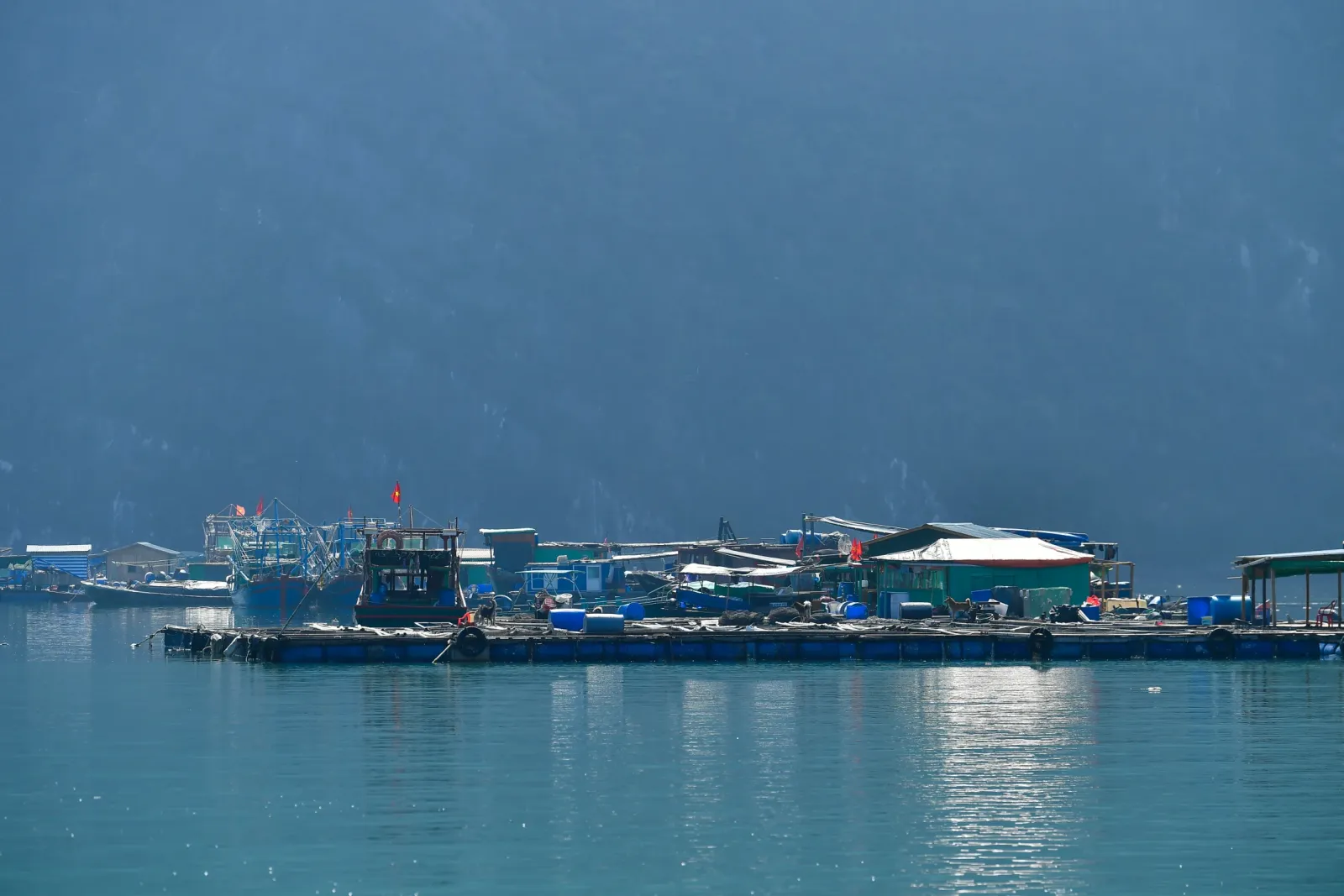
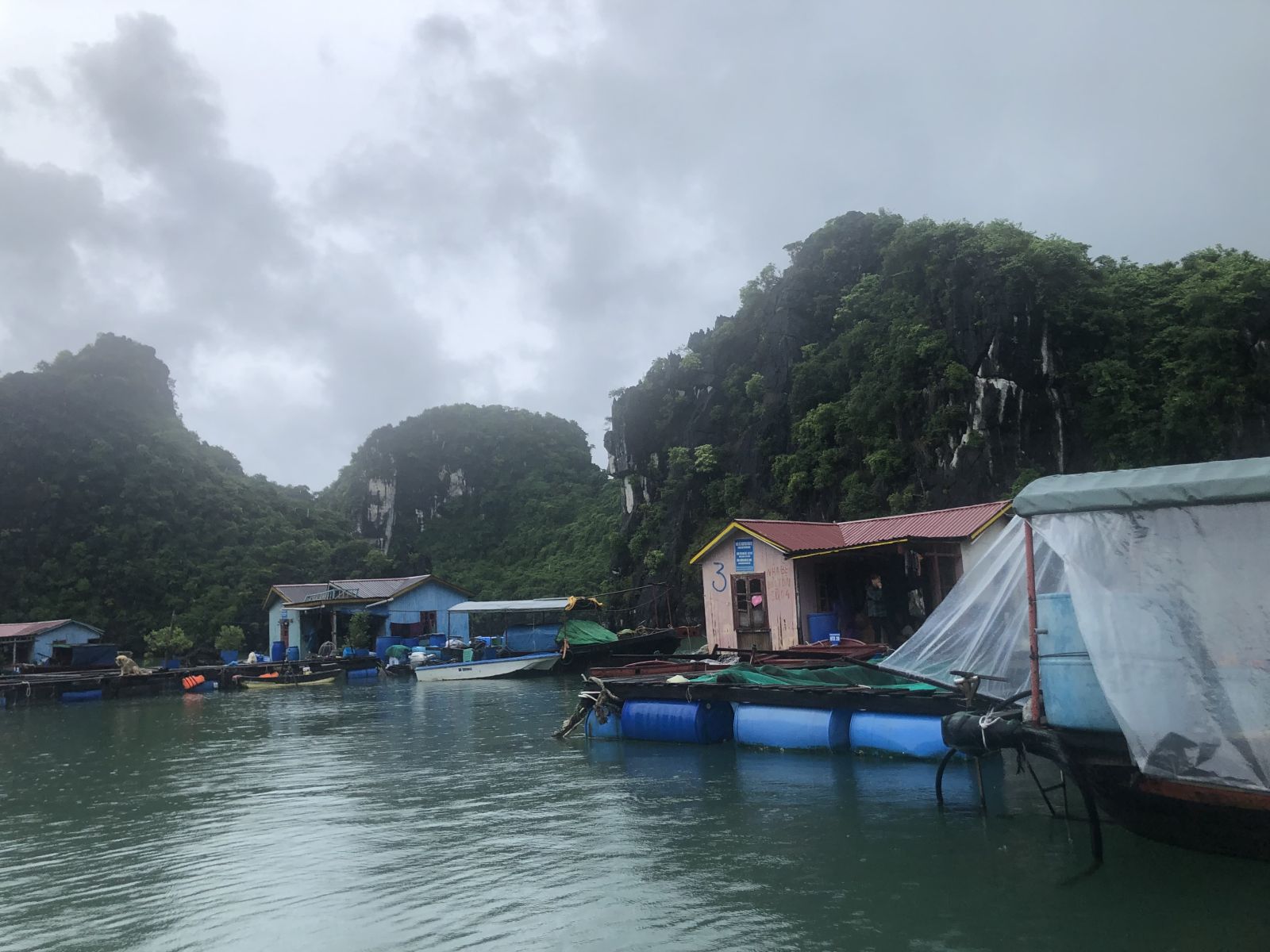
Foam buoys used in aquaculture have been replaced.
Ha Long Bay Management Department's report states that, by implementing solutions to reduce plastic waste in the Heritage Site, the "Ha Long Bay Without Plastic Waste" program was effectively launched on September 1st, 2019. This program prohibits the use of single-use plastic products in service and tourism activities on the Bay. As a result, there has been a 90% reduction in the amount of single-use plastic waste that needs to be collected at the tourist sites on the Bay, and 94% of foam buoys on floating structures in the Bay have been replaced.
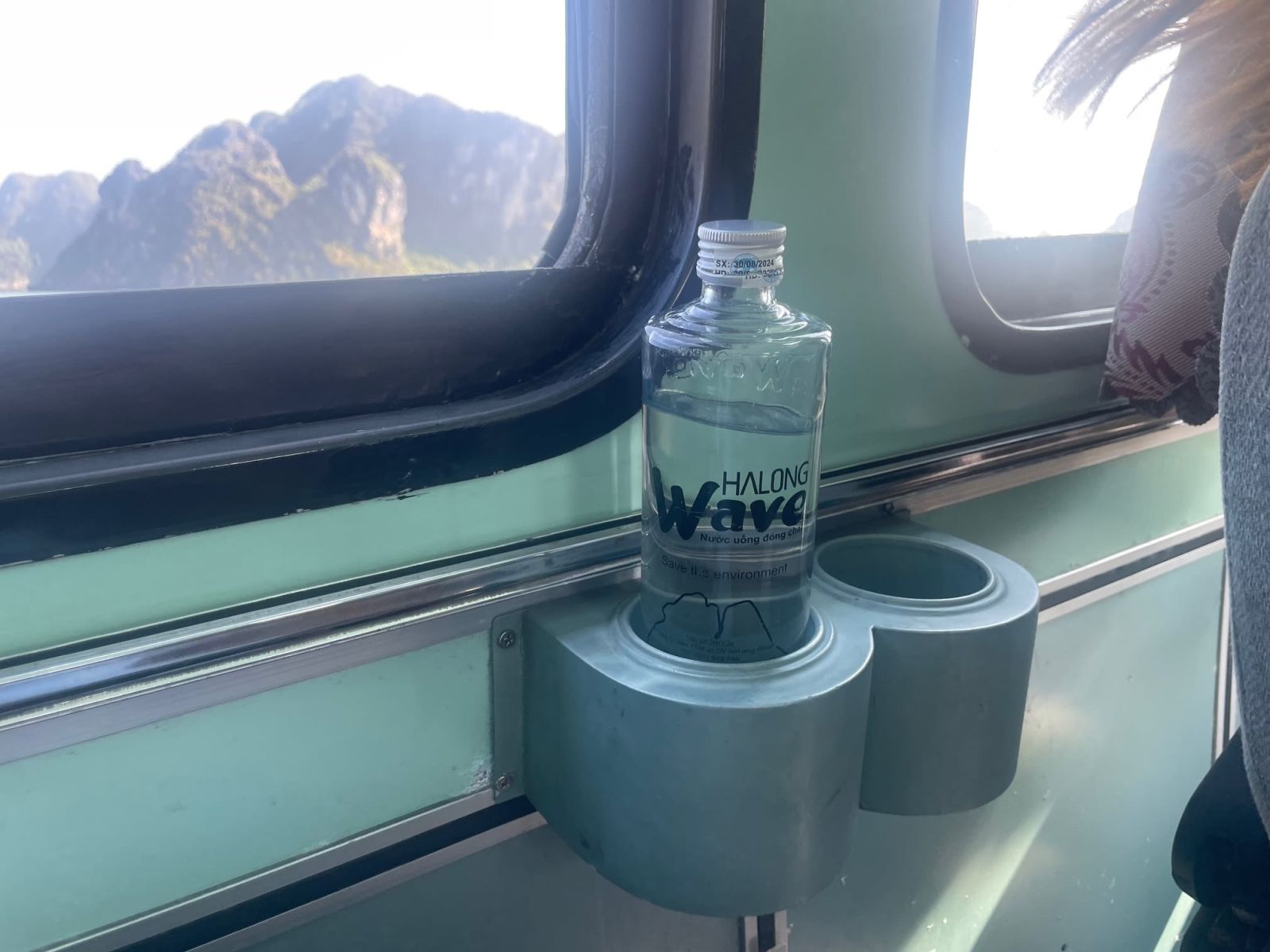
Glass water bottles have replaced single-use plastic bottles in tourism services on the Bay.
Mrs. Nguyễn Huyền Anh, Director of the Quang Ninh Department of Tourism, stated that in the past, tourists visiting the Bay often freely brought single-use plastic products. However, through the advocacy and efforts of the management authorities, tourists voluntarily left these products on shore, and locals participating in activities on the Bay also stopped bringing single-use plastic items. The reduction of plastic waste has been strongly implemented in Ha Long Bay and the Co To island region, becoming a positive movement that involves the whole community. The locals have become the most effective promoters of this change. Minimizing plastic waste has been one of the most notable aspects of the efforts to protect the heritage and develop green tourism in Ha Long Bay in recent times.
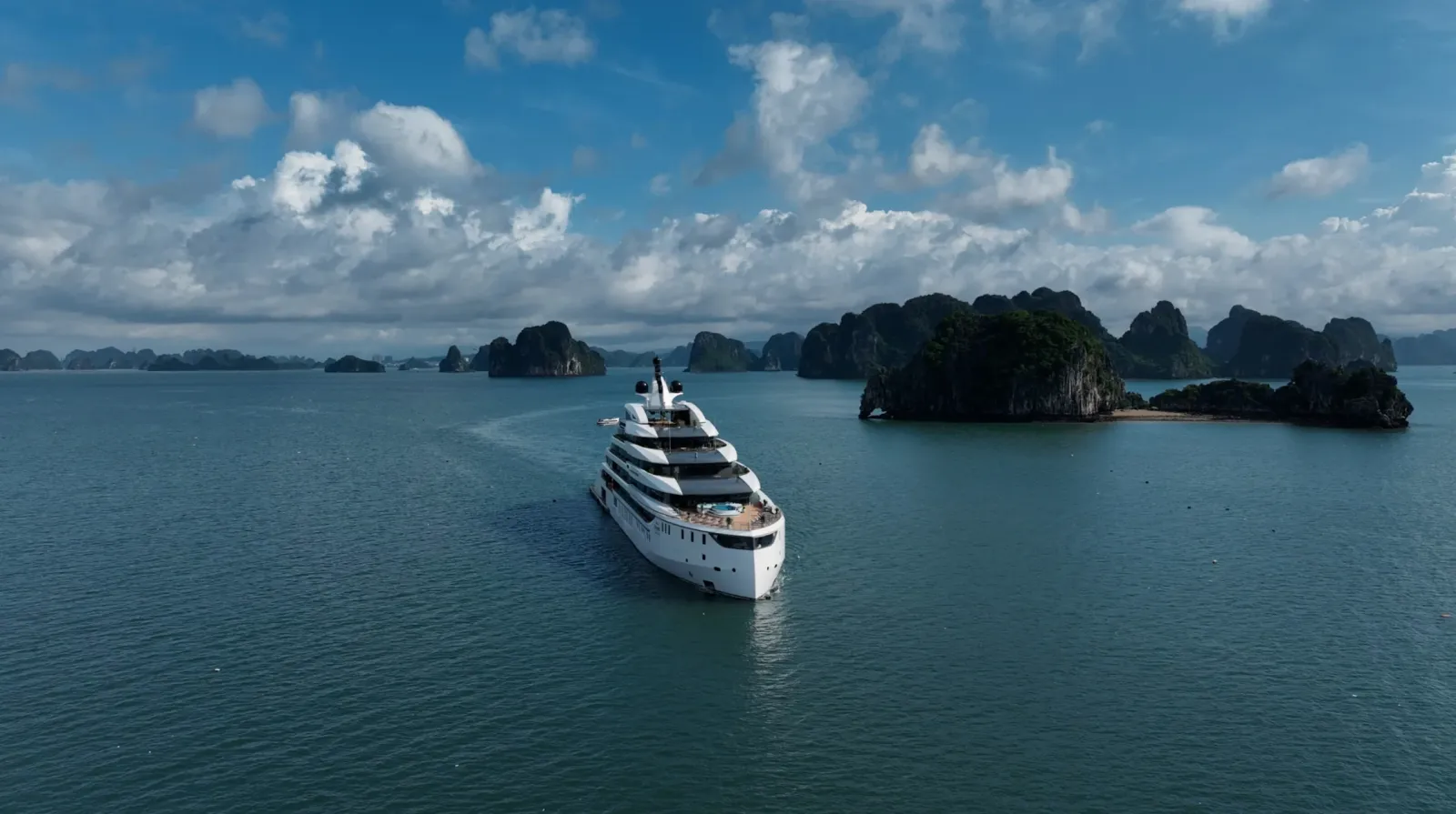
The Exemplary "Green" 6-Star cruise
Recently, at the World Cruise Awards 2024, Grand Pioneers Cruise, surpassing well-known brands such as Disney Cruise Line, MSC Cruises, and Norwegian Cruise Line, was honored as the “Best Green Cruise Line in the World 2024.”
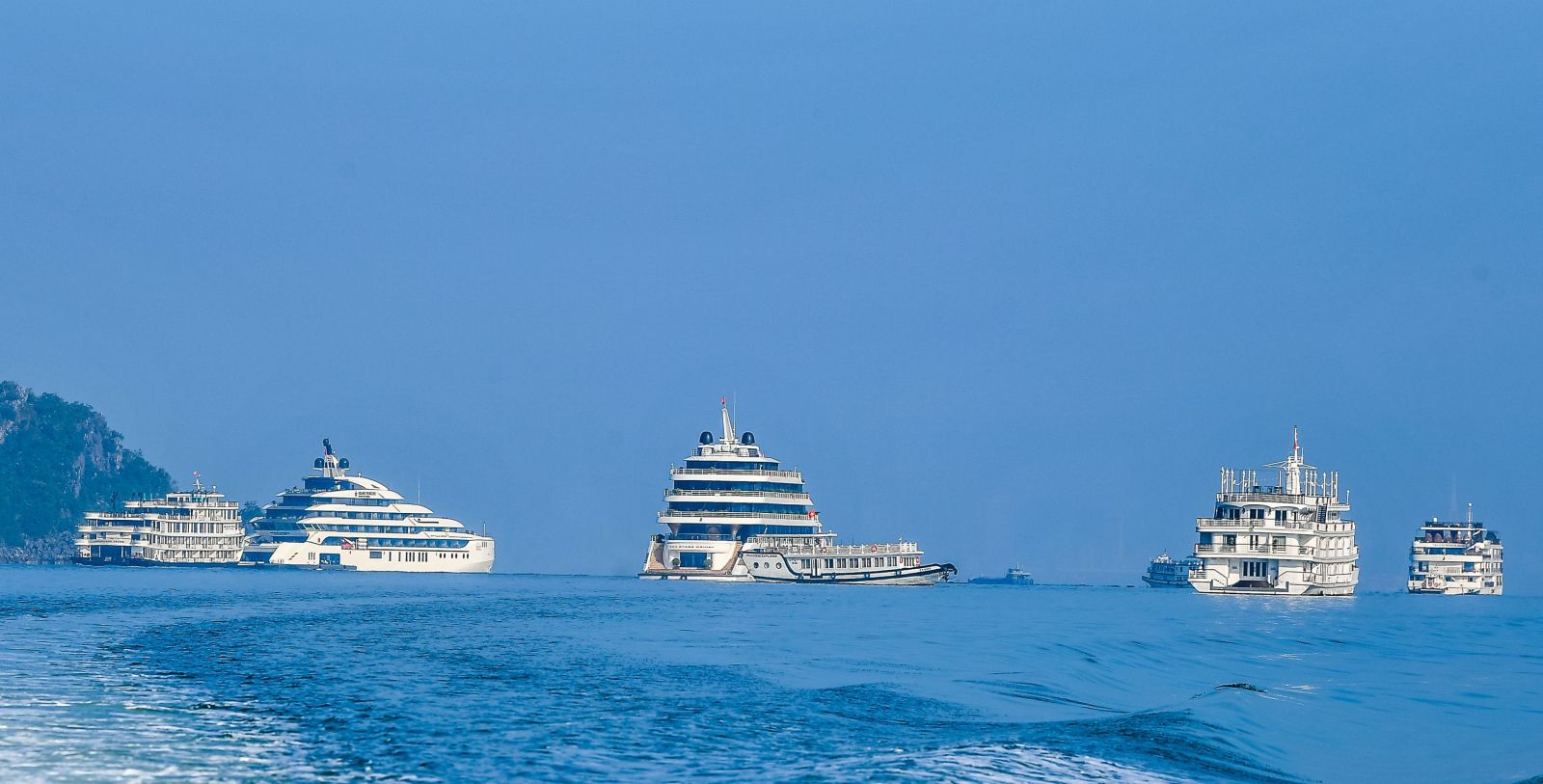
Two cruise ships of Viet Thuan Group.
The Grand Pioneers Cruise Fleet: A Model of Green Tourism
Recently, the Grand Pioneers Cruise fleet, consisting of two 6-star ships, was recognized as an exemplary model for green tourism in Ha Long Bay. These are the only 6-star luxury cruises on the Bay, offering premium services focused on environmental protection, ensuring a green journey throughout. Grand Pioneers Cruise represents the current trend of tourism in Ha Long Bay: leveraging the heritage value, promoting green tourism, preserving the environment, and selectively attracting tourists rather than focusing on expansion.
One of the standout offerings from the company is the "Ha Long Heritage Journey" cruise, a flagship project designed to develop sustainable, green tourism based on the preservation and celebration of Ha Long Bay's heritage values. This high-end leisure product was created to showcase the natural beauty, culture, and people of the Bay.
On this journey, tourists will pass through four heritage regions, starting from Tuan Chau Port. The route takes visitors to hard-to-reach landmarks such as the Stone Park (considered an outdoor geological museum with a history spanning 320 million years), along with destinations like Dau Go Island, Xuong Rong Island, and the ancient fishing village of Vung Vieng.
The cruise ships are built to the highest global shipbuilding standards, equipped with Japanese air conditioning systems that use seawater for cooling, reducing greenhouse gas emissions and improving energy efficiency by up to 40%. The main engines and generators are designed to ensure safe, environmentally-friendly operation, and the advanced wastewater treatment system ensures that the wastewater is clean enough to "support fish farming," according to Mr. Lương Thế Tuyên, Deputy CEO of Grand Pioneers Cruise.
All equipment and supplies used to serve tourists on board are free from single-use plastic. Heat generated from the kitchen and engines is captured to warm the swimming pool water, while organic waste is recycled for various purposes. Inorganic waste and other types of waste are collected and sent ashore for processing.
Mr. Lương Thế Tuyên shared, "We want to create a positive impact on the environment. In particular, we will continue to lead the way in bringing the natural beauty of Vietnam to tourists in the most sustainable manner."
The guiding principle for the operation of the Grand Pioneers Cruise team is: "We only exist by protecting nature." This philosophy has been the foundation of every operation since the service began, from adopting green technologies to implementing long-term environmental protection measures for Ha Long Bay.
Nguyễn Huyền Anh, Director of the Quang Ninh Department of Tourism, stated that all tourist ships in Ha Long are now built to strict environmental protection standards, encouraging ships that meet even higher standards of cleanliness and sustainability.
To encourage more investment in green tourism, Dr. Nguyễn Anh Tuấn suggests that the next step is to improve the institutional framework, policies, and regulations governing sustainable tourism development. Additionally, tourism development should be based on respect for and protection of resources, ensuring the preservation of the natural landscape within the heritage site. Local authorities can implement environmental impact assessments for investment projects in the Bay before granting permits.
Dr. Nguyễn Anh Tuấn added, "It is important to encourage responsible investors to create green tourism products and services to promote green tourism consumption. At the same time, we should accelerate digital transformation and apply advanced, green, clean technologies in tourism business operations."
Guidelines for Sustainable Tourism Development
The Resolution No. 07-NQ/TU (dated May 24, 2013) by the Provincial Party Committee on the development of Quang Ninh's tourism for the period 2013-2020, with a vision to 2030, defines the goal of developing sustainable, professional, modern, and efficient tourism. This will help the tourism sector become a key economic industry, increasingly contributing to the province’s GDP. It will also support the implementation of three strategic breakthroughs, align with growth models, restructure the economy, and transition from a "brown" to a "green" development model.
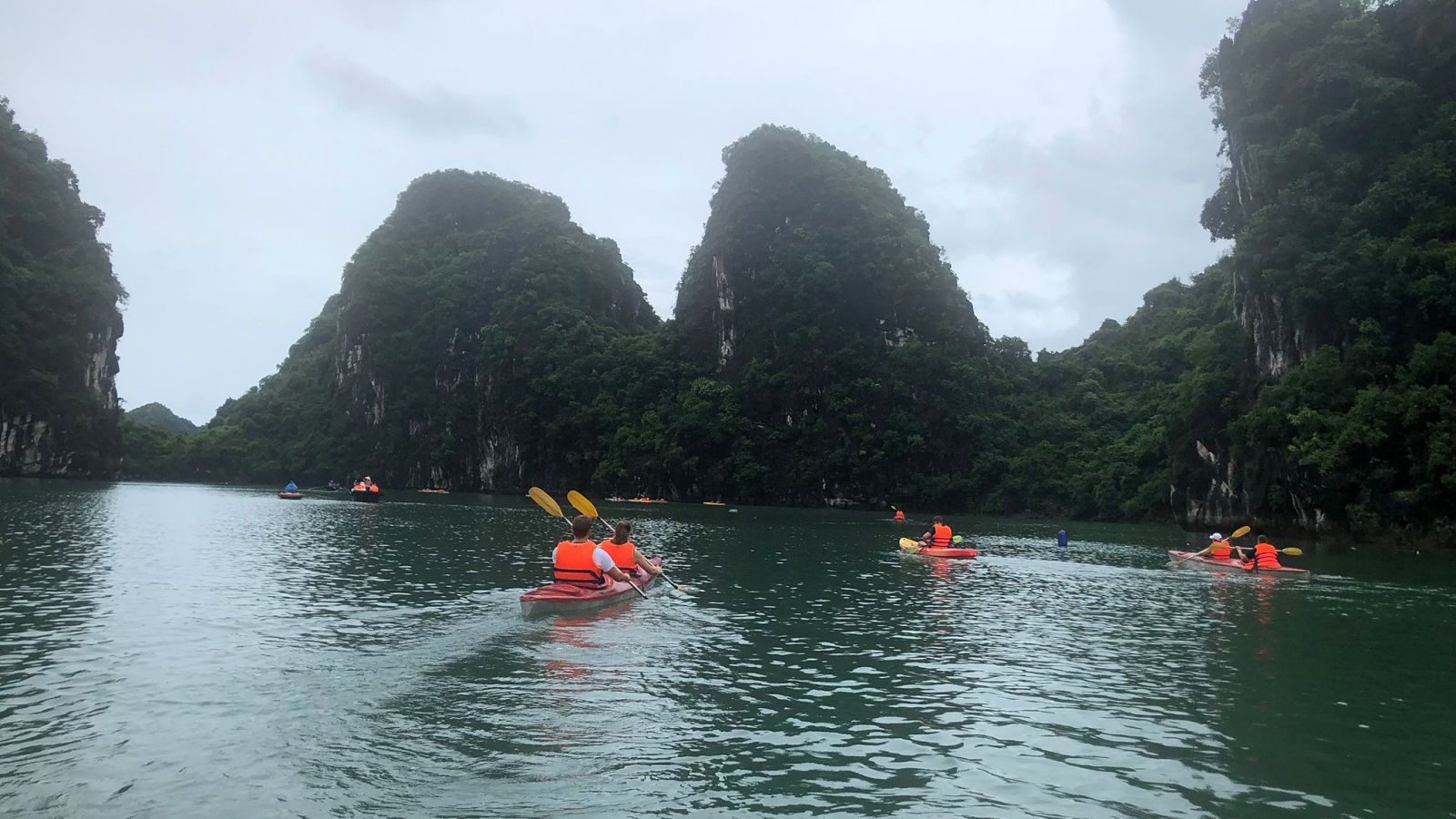
Kayaking to Vung Viêng Fishing Village
On August 8, 2023, Decision No. 2256/QĐ-UBND by the Quang Ninh Provincial People's Committee reaffirmed the goal of "developing tourism in line with green and sustainable growth, associated with the preservation and promotion of traditional cultural values; contributing to maintaining national security, border sovereignty; and ensuring social order and safety."
Along with the promotion of green tourism, the expansion of tourism activities to new destinations, new tours and routes, and connections with tourism spots in the province and neighboring areas, as well as promoting the intangible cultural values of Ha Long Bay's heritage, are key strategies for the tourism sector in Quang Ninh.
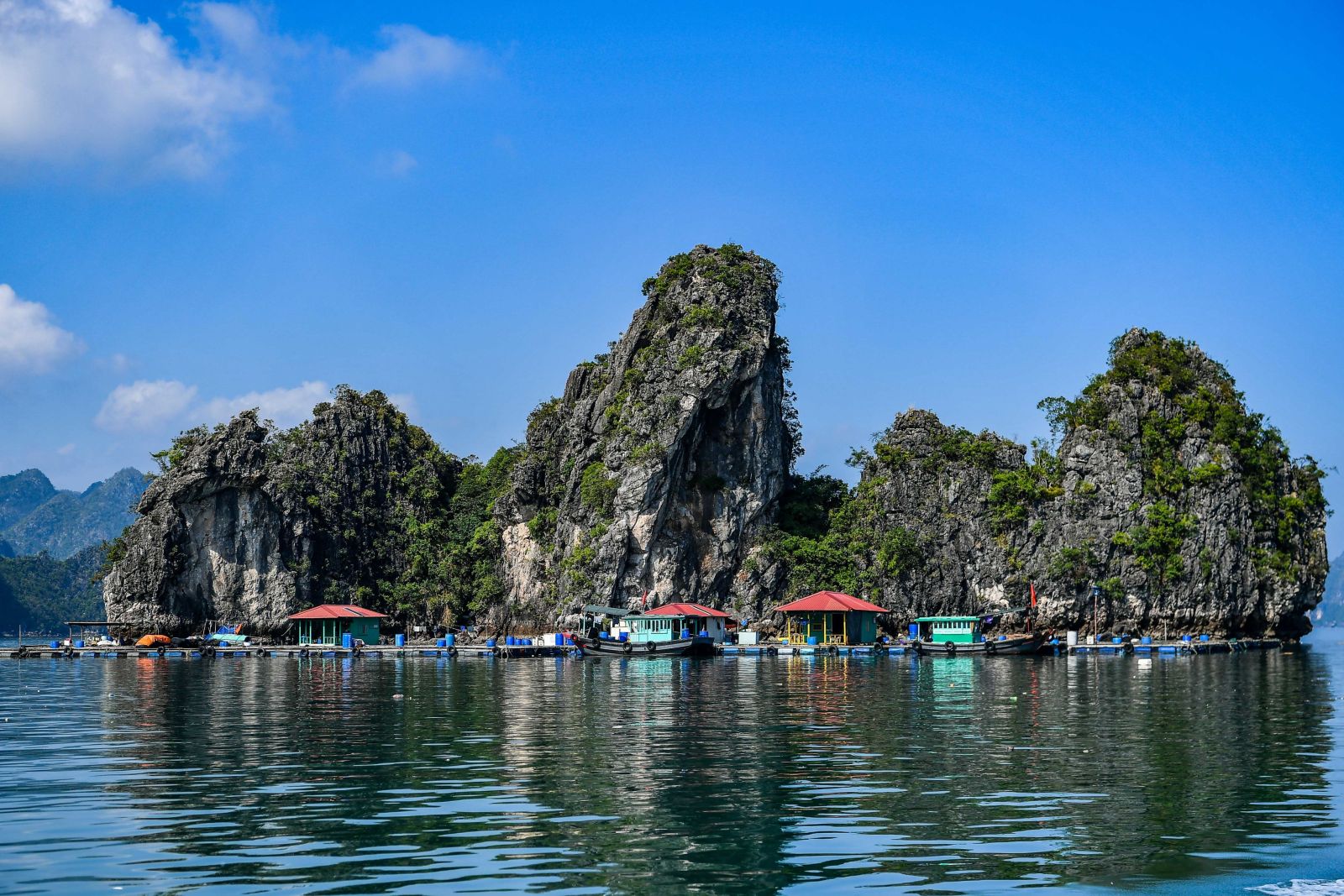
Ms. Nguyễn Huyền Anh, Director of the Quảng Ninh Department of Tourism, stated that based on the orientation for sustainable tourism development, when advising the province on developing tourism routes, the Department also takes into account the factors of promoting the values of the heritage with the spirit of heritage preservation.
The overall master plan for the development of Quảng Ninh tourism until 2020, with a vision to 2030, has been established to ensure that tourism development goes hand in hand with protecting and maximizing the natural advantages, preserving and promoting national identity, cultural values, protecting the landscape, and safeguarding the environment.
On this basis, Quảng Ninh's tourism industry has fully utilized existing potential to create unique tourism products. Many destinations have developed eco-tourism and exploration products in the direction of green tourism, with green tourism models that benefit both the environment and human health.
Every year, Thailand temporarily closes about half of its national parks during the monsoon season to ensure tourist safety and help restore the natural environment. Some beaches, including Maya Bay, which gained global fame from the movie "The Beach," also had to close due to tourism overload in recent years.
Boracay Island in the Philippines also had to close for six months in 2018 to restore nature and the environment after a surge in tourism.
In 2024, Quảng Ninh province has planned, arranged, and announced 21 tourism routes on Ha Long Bay, including 3 new routes on the Bay to reduce density in the core area, and 13 new routes combined with visits to Bai Tu Long Bay. These routes have been developed with a clear orientation to reduce congestion and explore new tourist destinations.
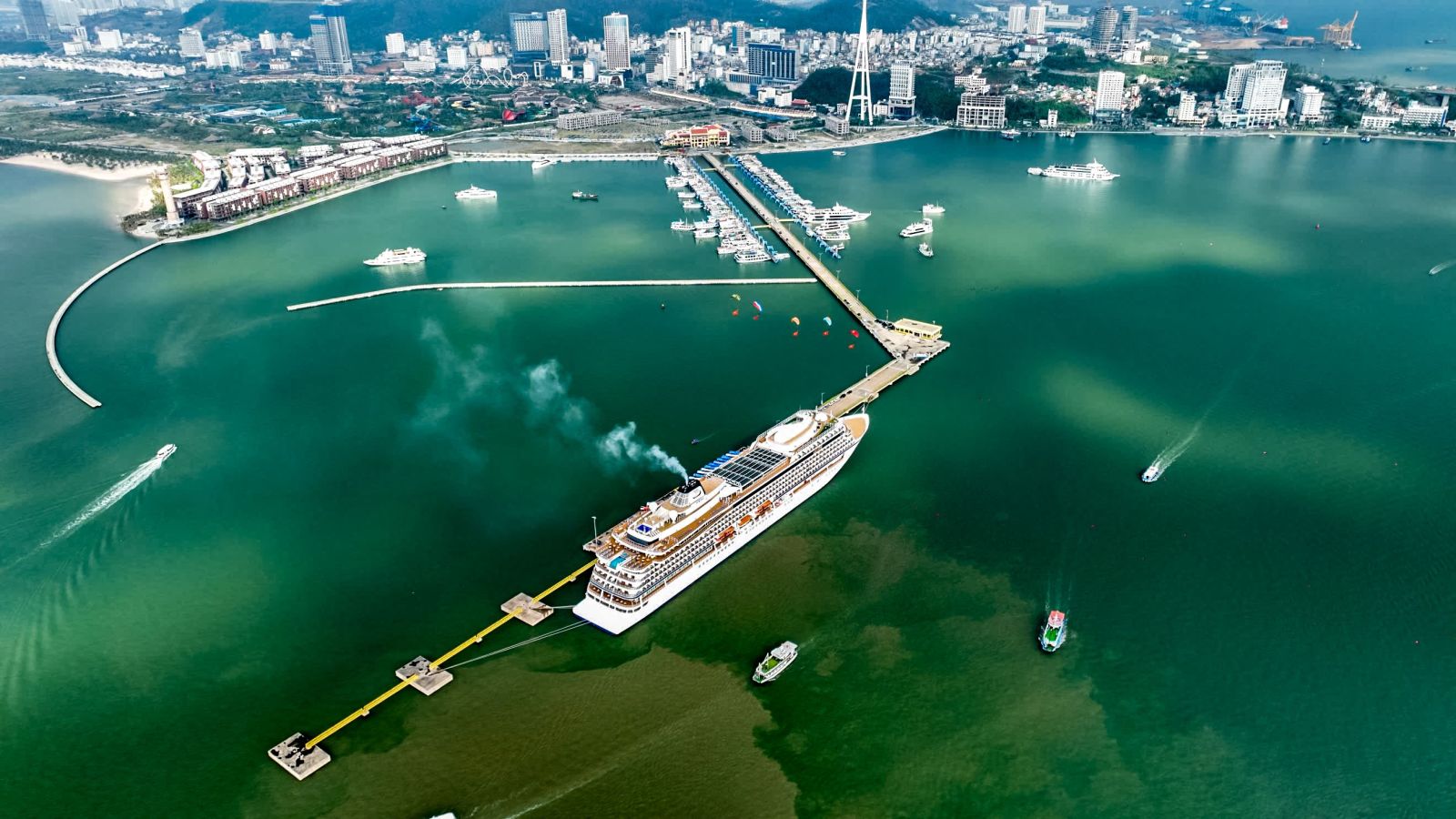
Super cruise ship docks in Quảng Ninh.
Additionally, in August, Ha Long Bay Management Department, along with the provincial working delegation, conducted a survey of approximately 21 new caves, islands, and beaches on the Bay to research and develop plans for their exploitation.
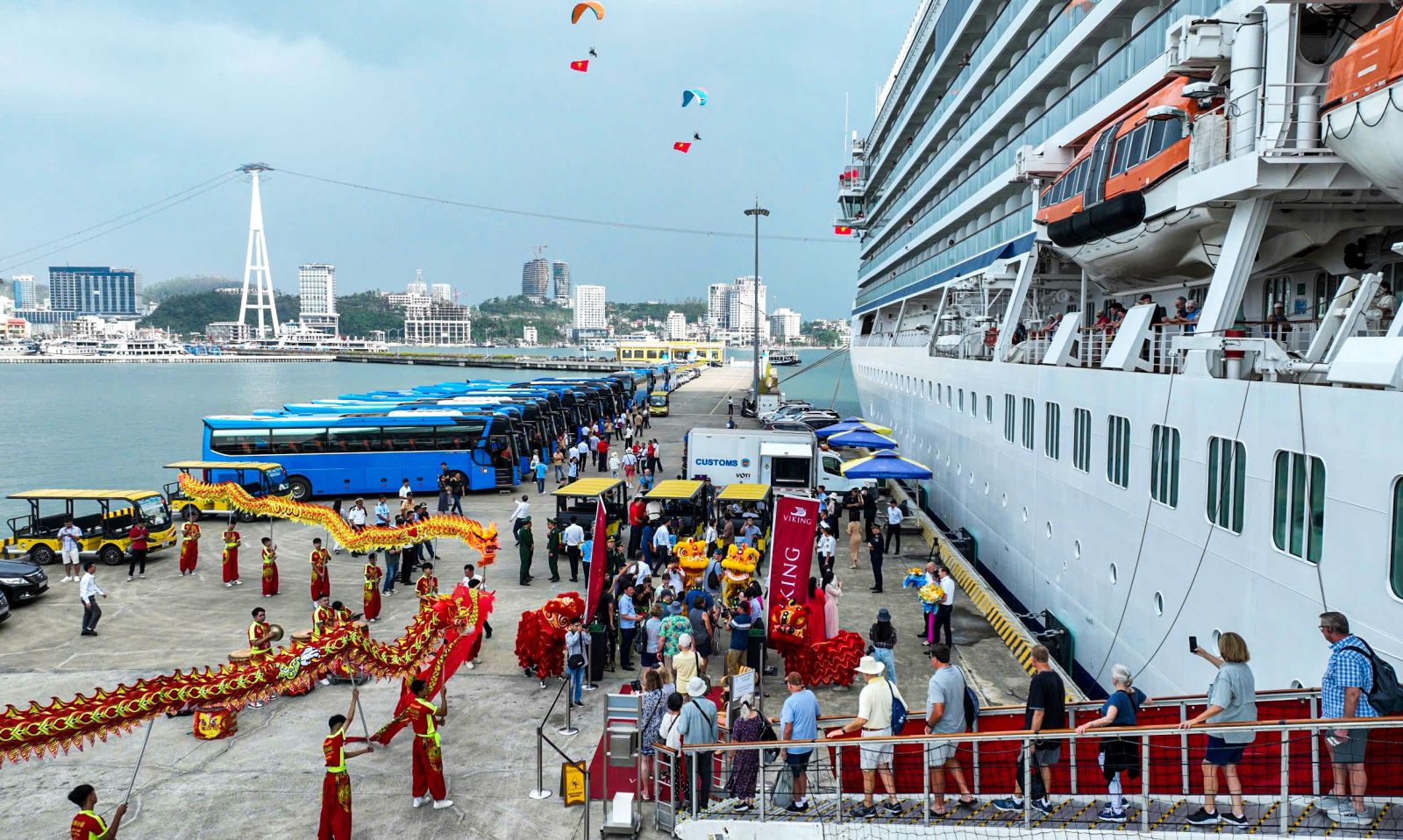
Welcoming guests from super cruise ships.
According to the Director of the Quảng Ninh Department of Tourism, "We have also developed new tour routes with the aim of dispersing visitors from the old routes, thus reducing pressure on the existing areas while providing new experiences in new destinations. This approach aims to expand the tourism space, increase visitor experiences, and gradually ease overcrowding on routes 1 and 2. We have had several working sessions with UNESCO, and this is also their recommendation."
Ms. Nguyễn Huyền Anh shared that developing tourism based on cultural foundations is one of the sustainable directions to balance and harmonize conservation and development, a challenge that many scientists and provincial leaders are concerned about. Therefore, in the province's development strategy, there is always a focus on ensuring harmony between conservation and development. The policy of dispersing visitors is one of the ways to relieve pressure on the core heritage areas.
The exploitation of the two highly potential values of Ha Long Bay-its biodiversity and culture-for tourism development is also part of the direction set by Quảng Ninh's tourism sector.
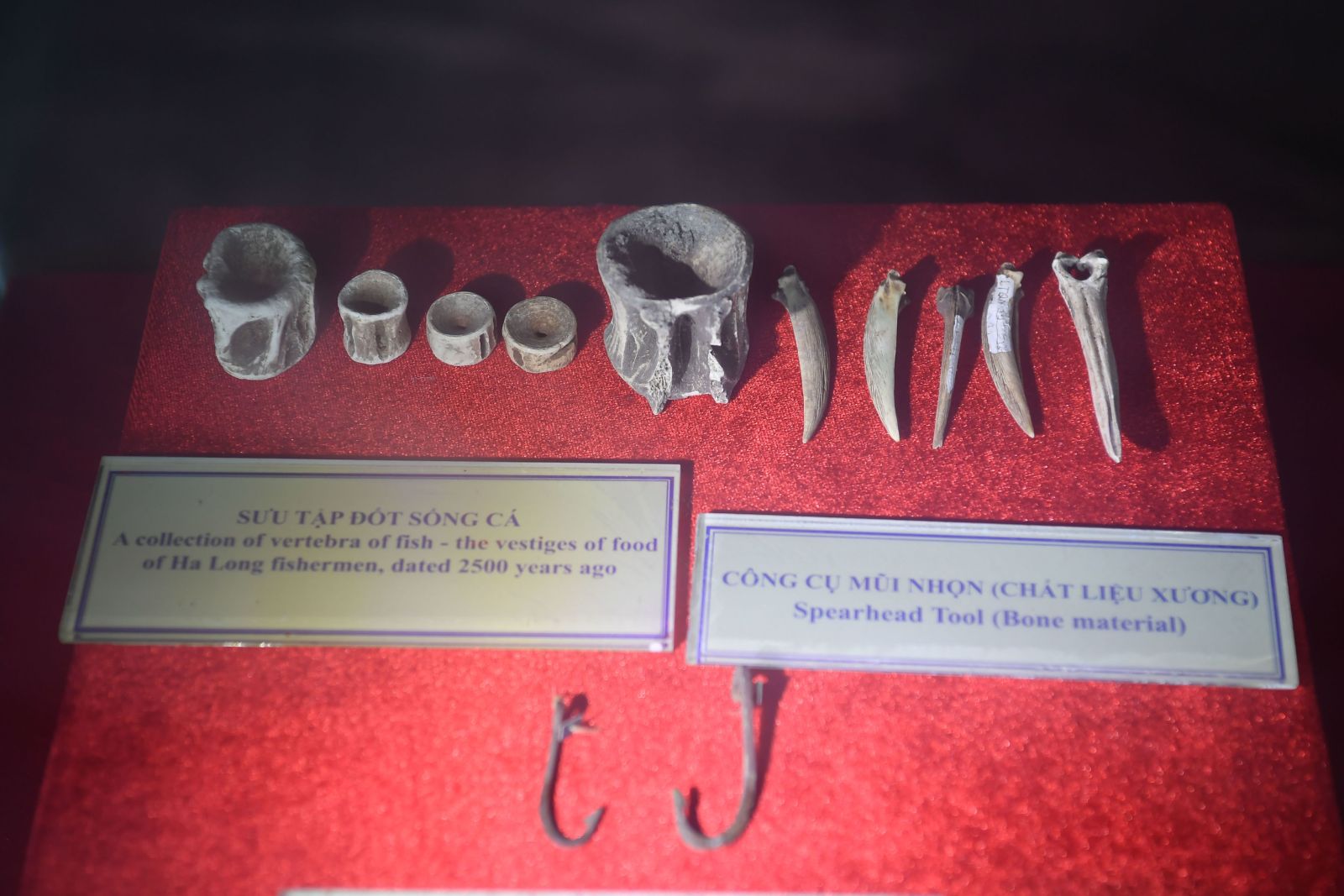
Displaying archaeological artifacts at Tiên Ông Cave.
On Ha Long Bay and Bai Tu Long Bay, there are many archaeological sites related to the ancient Vietnamese culture, associated with ancient cultures such as Soi Nhụ, Cái Bèo, and Ha Long. Currently, some cultural values are being effectively utilized in tourism. For example, several caves on the Bay, such as Tiên Ông Cave, Mê Cung Cave, and Sửng Sốt Cave, are currently displaying artifacts and preserving some excavation sites on-site.
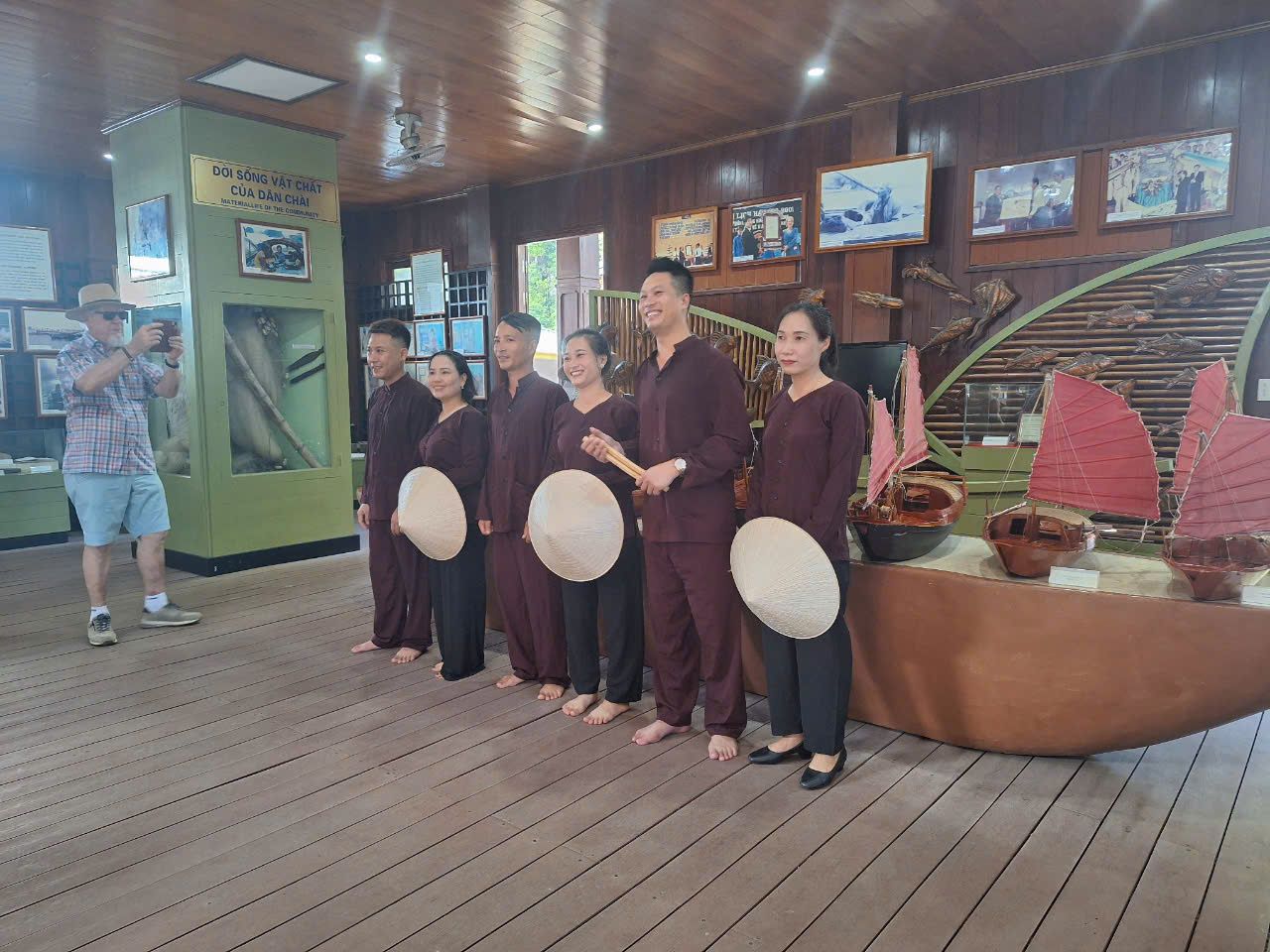
Performing the "giao duyên" (traditional love duet) at the Cửa Vạn Floating Cultural Center.
In addition, the maritime culture has been preserved through many generations of fishermen in Ha Long Bay and neighboring areas. The Cửa Vạn Cultural Center, located in the Bay, records many aspects of the fishing culture, from wedding and funeral customs to medicinal plants, and it is a popular place for tourists to experience.
Along with the ancient cultural values passed down through generations, new and modern cultural values are also being promoted and well-developed in tourism today in Quảng Ninh. These include music tourism on land and aboard cruise ships, featuring large music shows with famous singers, culinary tourism with traditional dishes rich in maritime culture, and entertainment tourism aimed at younger audiences.
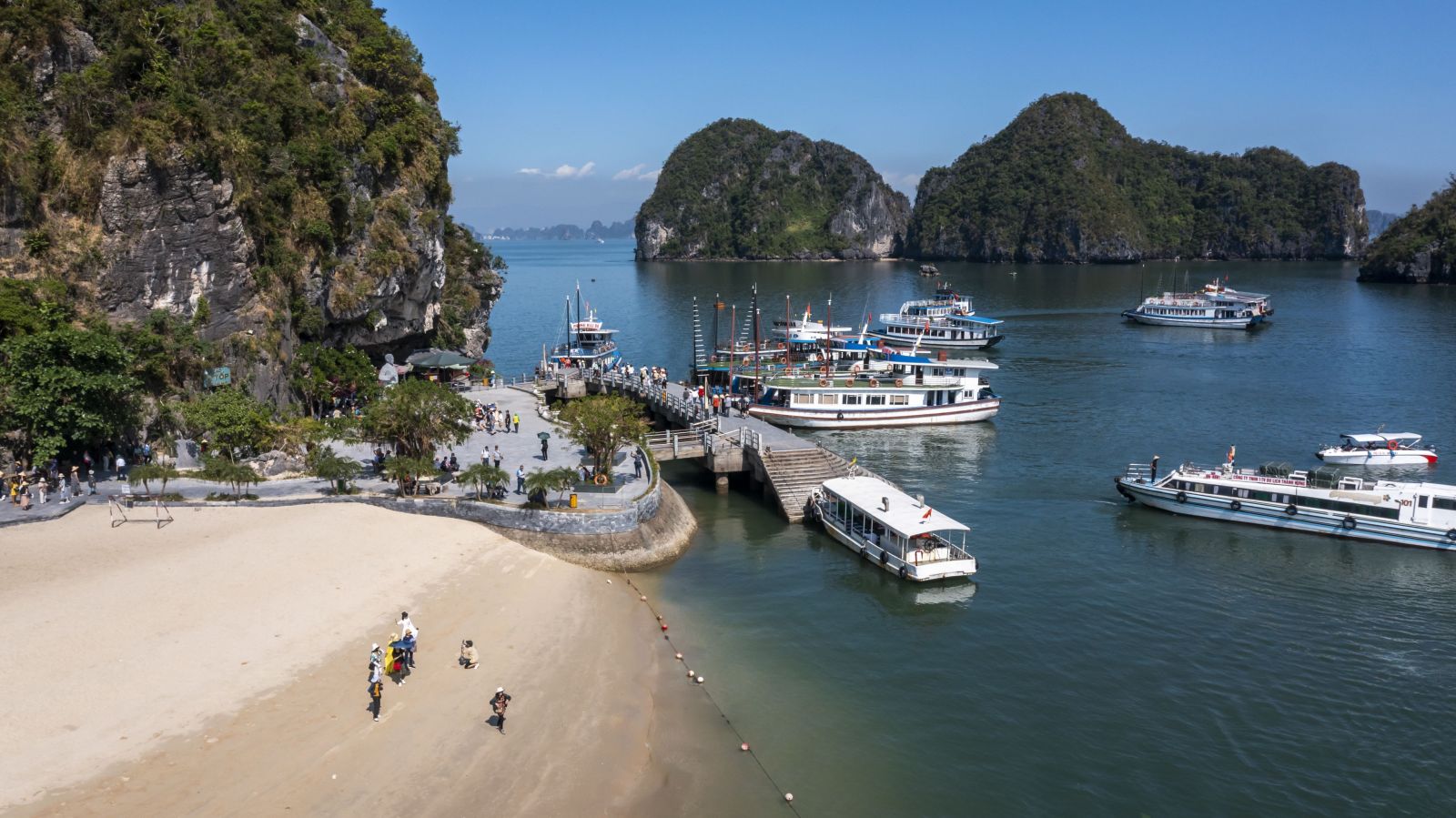
Tourist boats arriving at Ti Tốp Island.
One of the key goals in the sustainable tourism development strategy identified by Quảng Ninh province is to focus on the high-end segment of visitors who want to use premium services and appreciate pristine nature, without heavily impacting the environment during their stay. Ms. Nguyễn Huyền Anh stated that this is also a very unique tourism product the province is aiming to develop. "There are groups of guests traveling on 5- or 6-star cruise ships, who simply disembark to swim on the island and then return to the boat for services, without affecting the environment. This type of tourism should be promoted."
Quảng Ninh is a region rich in natural resources and minerals; however, one of its greatest strengths today is tourism. With the goal of sustainable tourism development, Quảng Ninh’s tourism has proven to be on the right track, making it the top choice for many domestic and international visitors who return every year, not just once.
Limiting mass tourism and focusing on sustainable tourism activities must be a top priority for Ha Long Bay and other world heritage sites.
By prioritizing quality over quantity, Vietnam can protect the natural landscape and biodiversity of the bay while creating unique and enriching experiences for visitors.
Efforts to strengthen management of Ha Long Bay with additional resources are needed to improve monitoring and conservation efforts.
Tourists must take responsibility for protecting and conserving heritage sites, which can be achieved through targeted communication and education on responsible tourism.
The application of sustainable approaches and clear solutions will help Ha Long Bay become a model for other regions across the country.
Mr. Jonathan Baker, UNESCO Representative in Vietnam.
Translate by Thuý Hà
